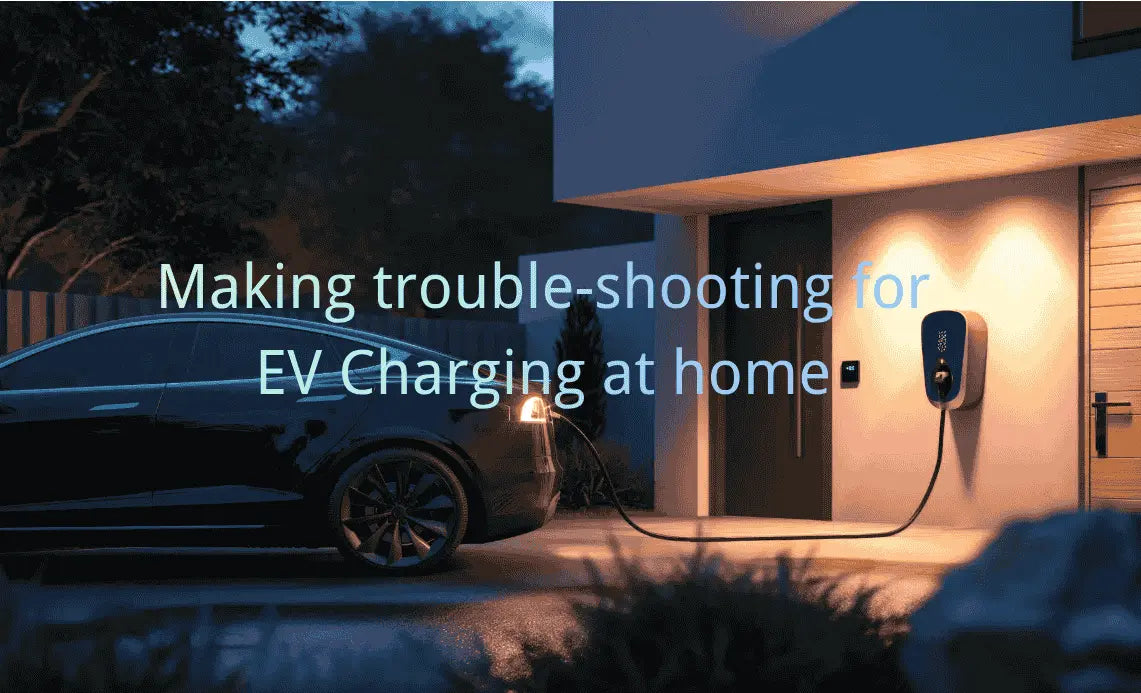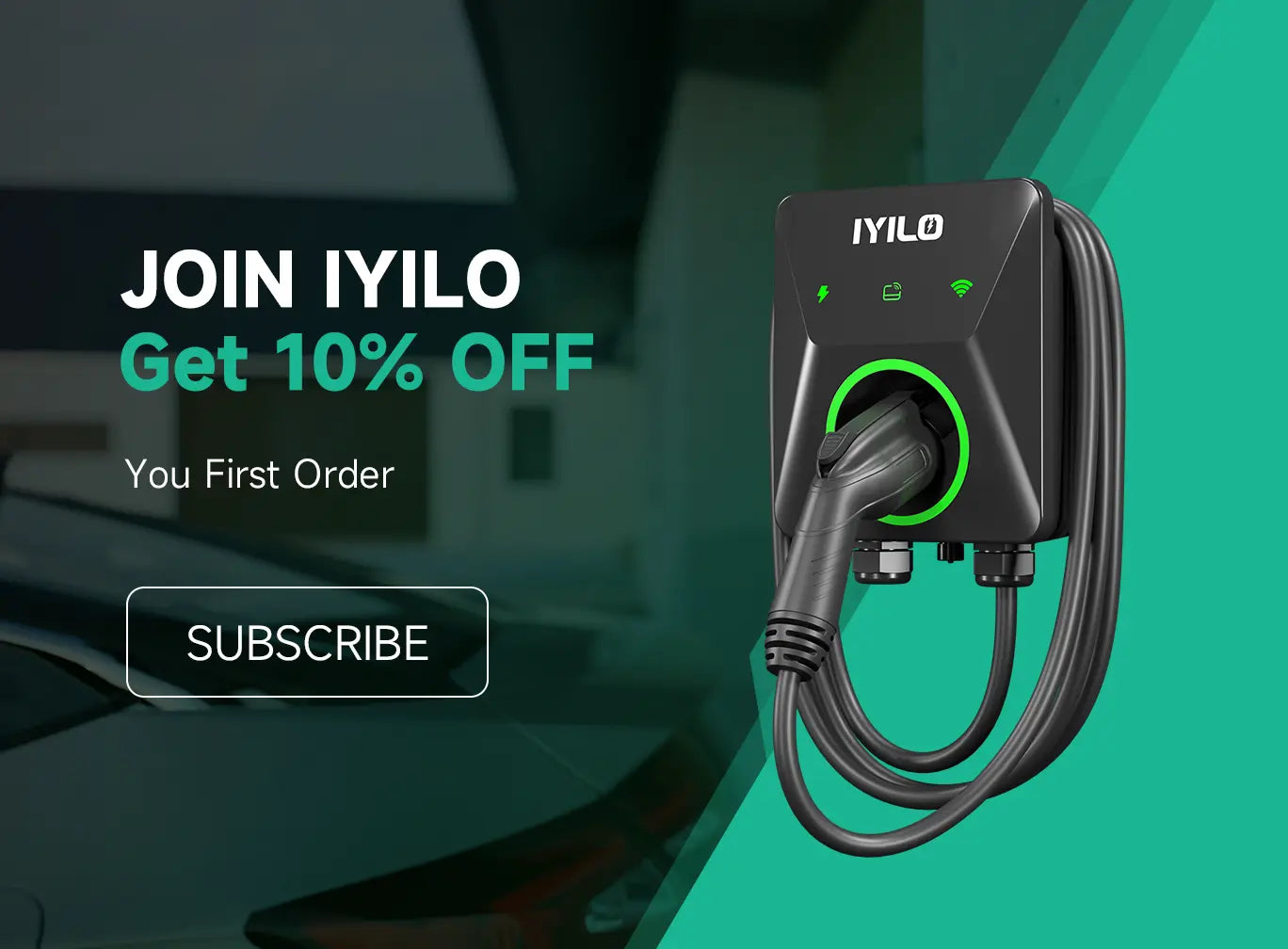Quick Summary:
-
Recognizing daily charging issues can alleviate your charging anxiety.
-
Frequent charging issues are caused by loose connections, circuit breaker tripping, and an unstable electricity system.
-
Charging power effectiveness depends on both internal factors and external environmental influences.
- Why is IYILO's charging so reliable and efficient?
Its matter of charging in a proper way

Daily EV Charging at home seems to never be a popular topic on the internet. Netizens (EV enthusiasts) are eager to discuss various charger installation issues and complain about the functionality of EV chargers.
For most people, the charging process seems quite routine: plugging the charger into the outlet on one side and connecting the other side to your EV, which immediately starts charging. You probably don’t even think twice about whether the process is actually being done correctly.
Of course, it’s understandable that people tend to overlook an "after-charging" inspection, as this daily routine feels so ordinary. However, it’s crucial to ensure that your charging setup is correct in order to minimize charging issues and avoid wasting time on charging problems.
Have you ever experienced this: when you're rushing to your EV to drive to work, only to realize it didn’t charge the night before, even though you clearly remember plugging it in? A great day can be completely ruined by something that could have been easily avoided.
But what often causes this is a small mistake that you might have overlooked. Next, let’s take a look at several common charging issues that many EV owners might not be aware of.
Overview of common charging problems

The connector side has a loose connection
The first and most frequent issue is inadequate plugging in. Many EV owners neglect to inspect after plugging in, simply plugging in the connector and leaving without even checking the console screen or their charging app. In most cases, the charging connector is not tightly connected to the interface. Instead, it’s loosely connected, without the owners even noticing. An adequate charging method is to insert the connector into the charging port until you hear a 'click,' which means the latch on the connector has been fully locked into place. After a few seconds, you will notice that both the EV charger and the EV have begun flashing their operation lights. Meanwhile, the screen or app will show that charging is in progress.
The Plug-In side has a loose connection
The plug-in side is the most overlooked part because it only needs to be installed once. People usually don’t pay much attention to it. However, this part is likely to cause a loose connection, and the consequences of such a connection may even be severe. Improperly inserting the plug into the outlet may cause potential fire hazards. The reduced contact area increases resistance, which in turn generates excessive heat. Therefore, it is necessary to periodically inspect your plug to ensure it is well-connected before use. Especially when you are going on a long trip and no one will be at home, please always remember to unplug for safety concerns.
Tripping the breaker by GFCI outlet

This problem often occurs when EV owners have installed a GFCI outlet. Of course, there are multiple other reasons that can cause the tripping issue. These reasons include overloaded charging, a broken breaker, or transient overcurrent. However, most tripping issues are unlikely to occur frequently or require handling by an electrician. Today, I want to introduce the issue of the breaker tripping due to the GFCI outlet.
In theory, the NEC Code requires the installation of a GFCI outlet. However, nowadays, well-known brands rarely feature the CCID 20 Internal GFCI protection. When the chargers begin to self-test, they generate a small ground fault, which may cause external GFCI breakers to trip and interrupt charging, leading to unnecessary charging interruptions and confusing users.
Therefore, many EV owners opt for hardwiring their chargers to avoid the nuisance of current fluctuations caused by excessive safety protection
Voltage Fluctuation
This fault is reported by the EV charger itself, referring to voltage fluctuating outside the safe range. It can occur in several scenarios. For instance, charging while several heavy-load appliances are operating can cause high instantaneous voltage variations. Another common scenario is when the electrical grid can only support a limited load, becoming unstable due to multiple high-demand loads operating at the same time.
Therefore, avoiding the use of high-power appliances at the same time can effectively reduce the occurrence of this fault. Monitor your voltage for fluctuations, especially when the electrical load is low
Initial Diagnosis: Understanding the Problem
Before the charging process begins, ensuring that the charging functionality works is critical. However, diagnosing the charging issue after the charger malfunctions is also essential. Depending on the situation, the main steps for inspecting charging issues can be divided into the following two parts
Signs of charging issues
Usually, when the charger malfunctions, it will likely appear on the charger’s screen or app with an error code. Alternatively, the light indicator may blink in different patterns to show different error types.
First, we need to check the displayed error code and refer to the corresponding instructions to identify the error type, which can be found in the user manual or provided by the charger’s customer service.
Secondly, after confirming the issues with the EV charger company, classify the issue type based on whether the issues are caused by the charger itself, external devices, or the environment
Trouble-shooting process
Generally, the sellers will provide the corresponding troubleshooting process to help owners swiftly resolve basic problems. For instance, the IYILO Level 2 EV Charger has an NTC temperature sensor, which allows customers to detect overheating. When the temperature exceeds 203 ℉, the charger will swiftly stop charging and send an alarm through the app. EV owners can find the corresponding error code in IYILO's user manual, which will allow them to solve this issue with ease.
However, some faults may not be caused by the charger itself. Other factors might cause the charger to stop charging properly. In this situation, we need to identify whether we can fix the issue ourselves or have it handled by a qualified electrician. However, we should always be very careful when working with electricity. The correct step is to shut off the power before moving on to the next step.
For instance, when the charger disconnects from Wi-Fi, users won’t be able to use the charger’s dedicated app to perform certain functions, and the charger will display a Wi-Fi error. In this case, we should inspect the router the charger was connected to and check if the issue is due to a distance problem or a telecommunications malfunction.
In general, different errors correspond to a specific troubleshooting process. Troubleshooting advice should always follow a strict inspection procedure under the guidance of the sellers or, at the very least, consult a professional electrician.
IYILO EV Charger, making your EV charging more reliable
The troubleshooting process is somewhat overwhelming for most EV owners, especially when they lack the knowledge to figure out the problems by themselves. Customers are often intolerant of long-term unresolved issues. Therefore, an intuitive 'error-checking' guide is essential for most EV owners. IYILO, our next-gen product, provides a detailed troubleshooting guide, walking customers through each step to ensure they clearly understand every part of the process.
However, instead of focusing solely on post-diagnosis, IYILO aims to reduce the occurrence of faults to enhance the customer experience. This is why they focus so much on product quality.
Firstly, IYILO starts a self-test when powered on for the first time to ensure every function is properly set up before use. Because the IYILO charger features a comprehensive safety protection system, meaning it has more sensors and hardware components than other chargers.
Traditionally, people believe that the more components inside a device, the more likely it is to have errors compared to simpler ones. However, IYILO didn’t follow this pattern; instead, it has been validated for its stability and lower error occurrence rate, benefiting from high-quality hardware and remote diagnostic capability.
Secondly, IYILO is equipped with an advanced safety protection component, which can decrease the malfunction rate to the lowest possible level, avoiding severe errors or consequences. For instance, the NTC temp sensor is a good example of this. The NTC temp sensor can effectively protect the plug from damage through dynamic current adjustment, automatically monitoring and controlling the temperature through this adjustment.
Generally, knowing the solution and fixing issues can definitely save a lot of time; however, lacking specialized knowledge can be a barrier for most people. Therefore, choosing a responsible and trusted EV charger seems like a very smart way to handle your charger every day.



0 comments